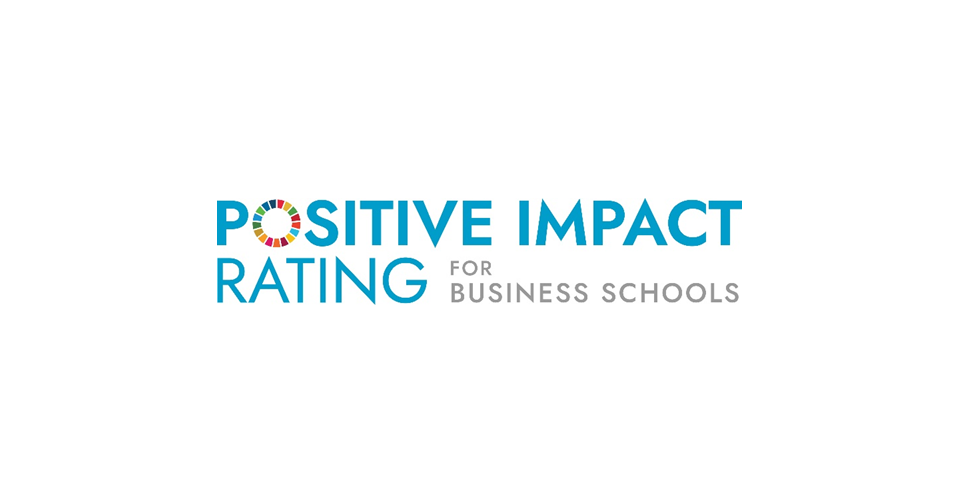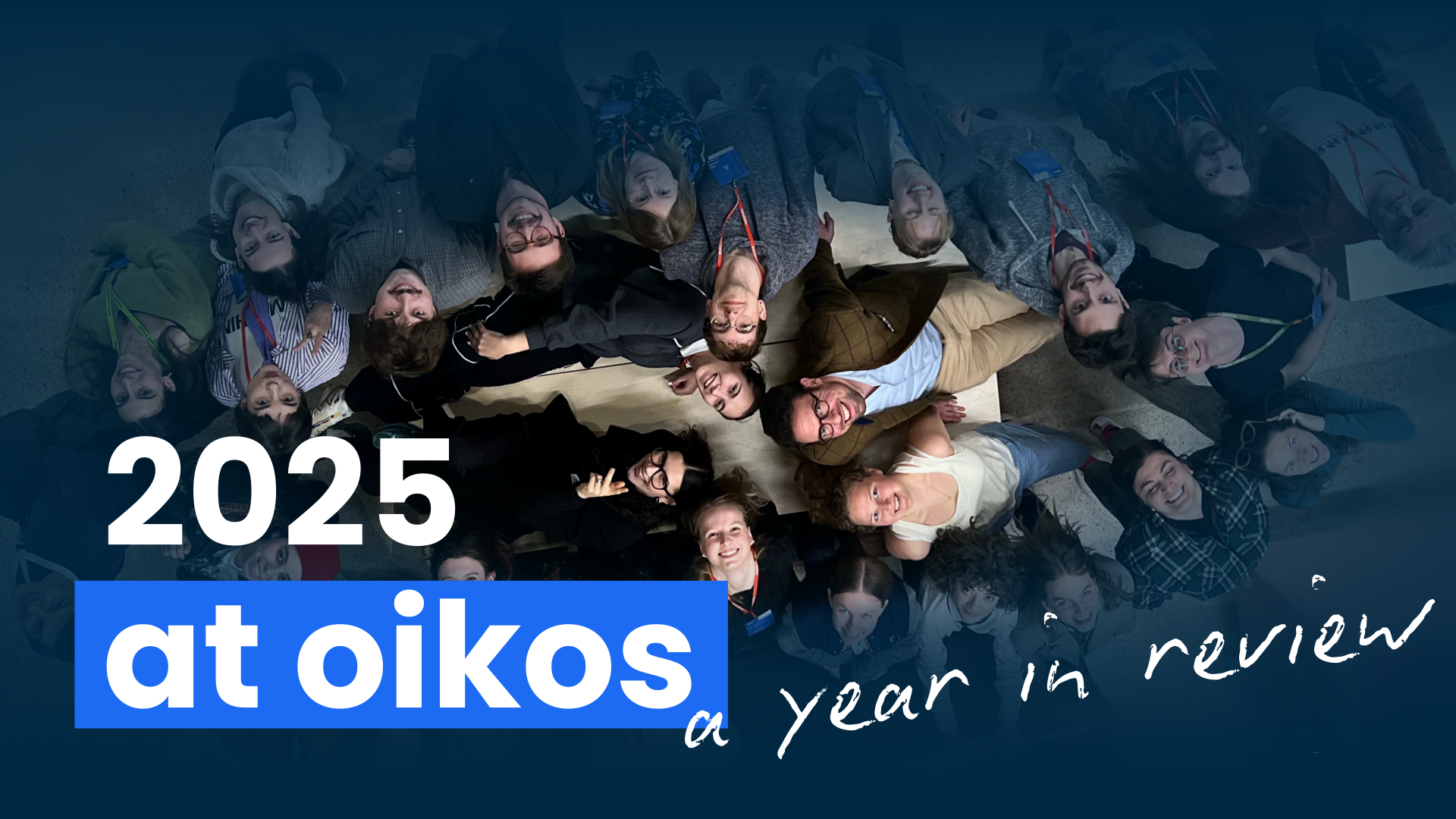
The World Economic Forum, Davos, Switzerland, January 22, 2020
The Positive Impact Rating (PIR) is a new rating conducted by students and for students. It is the first time that students around the world assess their business schools on how they perceive their positive impact in the world. The positive impact of business schools goes beyond their contribution to business and the economy; it addresses the need for their positive impact for society.
“Future generations will be grateful for students selecting PIR business schools. Such enlightened leaders are the key for business to achieve a positive impact for the world.”
-Antonio Hautle, Executive Director, UN Global Compact Switzerland.
The larger role of business schools
Business schools are traditionally seen to serve students by developing their management competences and to serve business organizations by providing them with educated talent, insights from research and continuous education for their staff. Business schools thereby support business and the economy. Providing a positive impact for society has not been considered as core to business schools, but demands for it have steadily increased in the past decade as exemplified by the UN Sustainable Development Goals. This new business school rating responds to these demands.
“Students demand a paradigm shift at business schools. After strongly raising our voice in 2019, the PIR enables us now to act with the schools to achieve that deep change.”
-Clémentine Robert, President oikos International.
What students want!
Students provided an incredibly wealth of constructive comments on how their schools can increase their positive impact. This rating is a further sign that 2019 was the year were the youth spoke up and the global consciousness shifted regarding not only the climate crisis but also social justice.
Students are very clear in what they want their schools to STOP doing: 1) Stop investing in fossil fuels; 2) Stop treating sustainability & social entrepreneurship as second-class topics; 3) Stop partnering and accepting funds from unethical companies and individuals; 4) Stop hiring professors who do not care about doing good, 5) Stop emphasizing profit maximization, 6) Stop flying students abroad for a course just because it’s cool to do so.
There is also global consensus on what they want their schools to START doing: 1) Make sustainability and social impact training mandatory in curricula; 2) Bring science and facts to the political debate; 3) Reduce CO2 emissions & food waste; 4) Prioritize gender parity amongst students and faculty; 5) Exchange more with other schools and faculties, share good practice and evolve together; 6) Rename the school to underline the social mission of business education.
A tool for collaborative learning and action
The purpose of the positive impact rating is to enable learning at and across schools, rather than creating a competitive ranking. A rating offers the safety of groups rather than individual ranks and intends to foster collaboration. Schools therefore are positioned in five different levels, where they are featured alphabetically. Students and the management of each participating school receive free online access to a dashboard featuring their school’s results across the different areas in comparison with the average of all schools. This allows them to actively work towards increasing their positive impact. Some students have reported that meetings are already scheduled with school management.
| Areas | Dimensions of impact |
| Energizing
|
Governance |
| Culture | |
| Educating
|
Programs |
| Learning Methods | |
| Student Engagement | |
| Engaging | Institution as a role model |
| Public Engagement |
How to measure the impact of business schools?
The ambition of this rating is to be a lever of change in the much-needed deep transformation of business schools. Rankings have become increasingly important and this rating builds on this phenomenon by offering a new and hopefully better way to assess business schools in the 21st century. The impact of business schools is measured in three areas (energizing, educating, and engaging) which are further divided into seven dimensions (see table). These dimensions include assessing the programs offered and the learning methods used, and how students actively engage. It assesses a school’s culture and governance, which are predictors for becoming a positive impact school. And it looks at how members of the school are seen to engage in public as well as how the school is seen as serving as a role model in the eyes of students.
How the participating schools perform
In this first edition of the Positive Impact Rating, we set out to learn from a varied set of top schools around the world. For this, international student organizations reached out to students at the top 50 schools in the Financial Times Masters in Management 2018 ranking (FT) and the top 50 school in the Corporate Knights Green MBA ranking (CK). 51 business schools participated in the rating.
The Positive Impact Rating features 30 leading schools that have performed well in this student rating. While no school made the top level 5, nine schools are featured in level 4. These “transforming schools” show a positive impact culture, embedded in governance and systems, with visible results in a number of impact dimensions. A further 21 schools feature in level 3. These “progressing schools” show results across some impact dimensions. In the spirit of reinforcing good practice, the rating does not feature schools that were rated below level 3.
The nine transforming schools at level 4 are rated significantly better in the impact dimensions governance (23% higher) and culture (18% higher) than the rest of the schools, showing the importance of these dimensions in the change process.
Among the 51 participating schools, 26 appear in the FT and 19 in the CK rankings. Among the leading 30 schools, there are 13 FT and 11 CK schools. It is interesting to note that there are no top 25 FT schools among the level 4 schools, while level 4 includes three top 10 CK schools. The FT and CK rankings measure quality differently, with the “green” CK ranking a notch closer to measuring impact.
PIR learning = Peer learning
Students around the world are clear in their assessment that schools have much room for improvement when it comes to preparing them for dealing with sustainability challenges in their jobs and for a school reporting on its responsibility and sustainability performance (the role model dimension shows the lowest score). Students also critique their schools regarding their public engagement as well as the low level of student engagement (second and third lowest scores).
The nine top rated schools on level 4 are recognized by their students for including sustainability and societal engagement in their mission and for the degree to which these are seen as a driving force for the school (23% higher than average). These schools are also recognized by their students for having a culture that is aligned with their school’s purpose, for most of their people being highly motivated beyond self-interest and for strongly supporting personal development (18% higher than average).
The full PIR rating report includes best practice examples of those schools that have rated exceptionally well in one or the other of the seven dimensions. These examples are meant to inspire exchange and learning within and between schools, regionally or according to the change priorities.
By students for students
The international student organizations oikos, AIESEC, and Net Impact have joined forces with WWF Switzerland, OXFAM International and UN Global Compact Switzerland to launch this radically new business school rating. Together, these stakeholders represent the environment, society, business, and the next generation. In addition to changing business schools, they want to provide a more relevant selection tool for future students. Many of these future students care deeply about making a positive difference through their professional lives, yet they don’t necessarily know how to find the right business school. This rating is a tool for this next generation of change agents and as such is a response to wide-spread demands for a positive impact of business schools.
More information: www.PositiveImpactRating.org | @RatingImpact | #RatingImpact
Dedicated web section for the 2020 Report: www.PositiveImpactRating.org/PIR2020 (opens Jan 22nd 12:00)
Press & communications contact: Katrin Muff, President of the Positive Impact Rating Association
Katrin.Muff@PositiveImpactRating.org, Social: @KatrinMuff, Skype: Katrin.Muff, Phone: +41 79 310 0392
Appendices:






